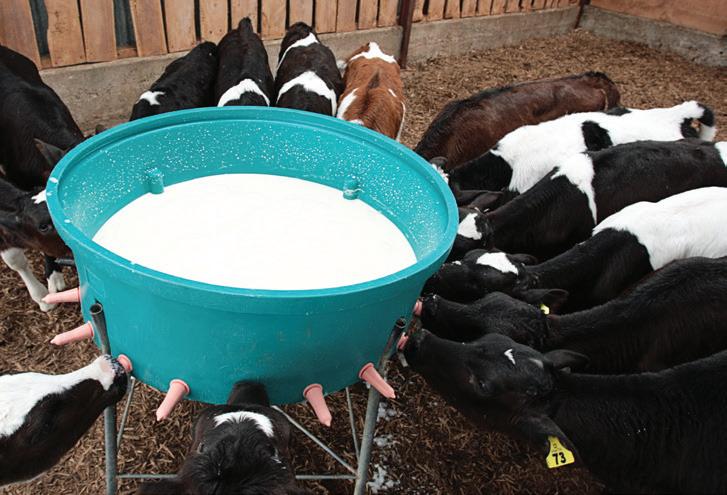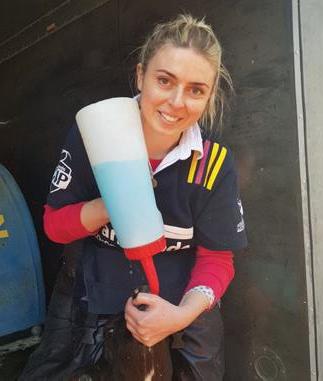
2 minute read
Calf husbandry
Attention to detail goes a long way when it comes to calf rearing and taking the time to assess calf behaviour and health each day can be very beneficial in terms of calf survivability and productivity.
Calves should have a daily routine, with the same person feeding them every day if possible and at the same time each day. The calf rearer should be quiet and relaxed as this will reduce stress for calves and they will be more likely to drink their share of milk. The rearer should have plenty of time to do their job and complete their daily checks, as it is important that no part of the rearing programme (feeding, cleaning or animal health) is overlooked and that any problems are not unnoticed or put off.
Top tips for caring for calves
• In the first 10 hours of life the calf should have 10% body weight of good quality, day one colostrum (see colostrum section for more detailed information). • If possible, pick up calves as soon as they are born. Getting them into the calf shed fast will ensure they are not cold for an extended period of time and will ensure they get the colostrum they require quickly. • Don’t be afraid to stomach tube calves as required if they don’t willingly drink their required volume of colostrum or milk. Going off their milk feed can indicate sickness, so keep your eye on these calves and tube them again next feed if required. • Calves should have their navels sprayed with iodine and checked regularly. If at 3 days of age the cord is bigger than a little finger, then it will require veterinary attention. • Bring milk to the calves where practical, not the other way around.
This will ensure calves are as relaxed as possible at feeding time. • Make clean water available at all times. • Take time to observe your calves’ behaviour so you can pick up on the slightest change – the earlier you intervene with sick calves, the better. • Keep records to help identify problems.
You may be able to trace problems back to events, or it may help you in future seasons. • Always have electrolyte on hand and try and use it in a proactive way as much as possible. Be the fence at the top of the cliff rather then the ambulance at the bottom of it. If you can identify calves that are heading towards a sickness and get electrolyte into them sooner rather then later, you will be surprised at how much you can prevent issues developing.









